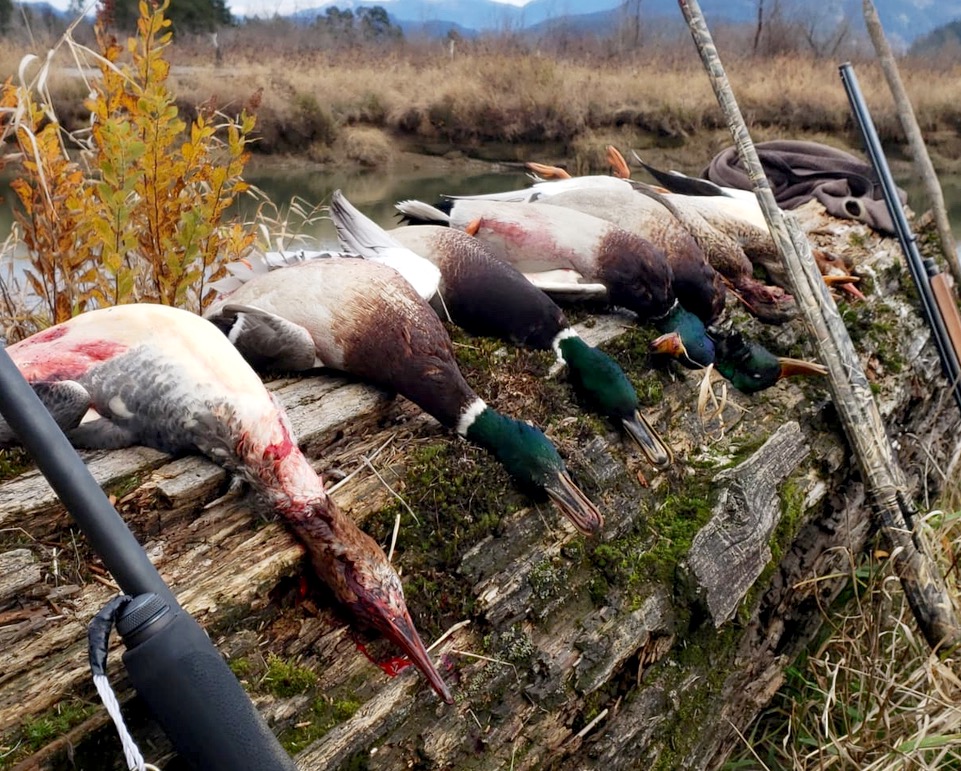Prep pointers
Avoid culinary disasters by handling your waterfowl with care
Advertisement
I often hear hunters and non-hunters alike saying they don’t care to eat ducks and geese. Their complaints range from the meat tasting like liver to it being too dry and chewy. Those descriptions may well be true, but not because waterfowl typically make for poor table fare. Rather, the bad taste is usually the result of the way the birds were handled, both in the field and in the kitchen. Here’s how to avoid that.
[easy-tweet tweet=”If your ducks and geese don’t taste great, you’ve done something wrong. @OutdoorBailey explains how to correctly handle your waterfowl ” user=”OutdoorCanada” hashtags=”hunting, duckhunting, goosehunting, waterfowling, shotgunning”]
Advertisement
COLLECTING
Do not pile downed birds on top of one another during your hunt. This prevents the meat from quickly cooling down and drying, which can adversely affect the taste. If a shot bird is severely damaged, process it as quickly as possible before rigor mortis sets in and makes it tougher to clean. If you process a bird in the field, be sure to leave one wing attached so conservation officers can identify the species.
HANGING
Advertisement
Before cleaning and plucking your birds back at home, consider hanging them whole for a few days to improve the quality of the meat. In a cool (3°C to 5°C), dry, well-aerated location, hang ducks by their heads for four to seven days, and geese for five to 10. This allows time for rigor mortis to subside and the muscle tissue to naturally break down, making the meat more tasty and tender.
PLUCKING
Waterfowl are best plucked whole unless they’re badly shot or have too many pinfeathers, or a recipe specifies otherwise. In those situations, you should remove the breasts and the legs. I generally peel the skin off the legs, but pluck the breasts and leave the skin on, which adds considerable taste to many recipes.
Plucking whole birds can be a long and tedious chore, but it’s worth the effort. There are no shortcuts, so take your time and enjoy the process. Use a propane torch to singe away any remaining pinfeathers.

CLEANING
To prepare birds for cooking or freezing, begin by cutting off the feet and wings at the first joint. Then peel back the skin to the base of the neck and cut off the head. Next, cut across the butt and remove the tail section, including the two oil preen glands—they can impart an unpleasant taste if left attached. Finally, remove the entrails. Many hunters save the heart and liver, which can be wonderful delicacies.
Thoroughly wash the dressed birds in cold water, then drain them completely and pat them dry. Once cleaned, waterfowl can be kept covered in the refrigerator for several days without spoiling, or they can be frozen.
FREEZING
Whole ducks and geese freeze better than individual pieces. If a recipe calls for just the legs or breasts, it’s best to remove them after thawing. I recommend investing in a vacuum sealer, which does an excellent job of removing air and preventing freezer burn. Otherwise, wrap the birds individually in two layers of cling wrap and store them in sealable bags, making sure to squeeze out the air. If properly packaged, waterfowl can remain in excellent condition for as long as a year.
When you plan to cook your birds, thaw them rapidly at room temperature, as thawing them slowly in a refrigerator can make the meat mushy. Ensure the birds are completely unfrozen and at room temperature before cooking.
COOKING
There are many excellent waterfowl recipes out there, so experiment to find the dishes that you and your friends and family enjoy the most. When cooking birds that were taken early in the season before they fattened up, add some fat to the recipe. Pork fat is best, although strips of bacon draped over the breasts also work. One final but critical piece of advice: never cook waterfowl beyond medium rare. Otherwise, you risk ending up with that dry, livery taste you tried so hard to avoid in the first place.
Bonus tip: Pellet check
Stray steel shot can be hard on your molars, so be vigilant when eating waterfowl. To avoid worry altogether, some hunters use a carpenter’s electronic stud finder to locate embedded pellets when they clean their birds.
For Outdoor Canada’s tastiest duck and goose recipes, go to www.outdoorcanada.ca/waterfowldishes.

